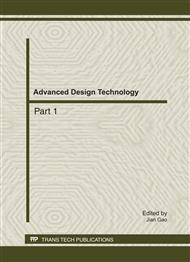[1]
Songlin Zhao. Comprehensive Processing Technology of Coconut. China Agriculture publishing house. Vol. 32(2007),p.1. In Chinese
Google Scholar
[2]
Rui Li, Meiqiu Li, Qiuyu Xia. Functional properties and application of virgin coconut oil. China Oils and Fats.Vol. 32(2007), p.10. In Chinese
Google Scholar
[3]
Rui Li, Qiuyu Xia, Songlin Zhao, et al.Storage stability of coconut oil. Journal of the Chinese Cereals and Oils Association. Vol.25(2010), p.57. In Chinese
Google Scholar
[4]
Rui Li, Qiuyu Xia, Songlin Zhao , et al.In Virto Antioxidant Activity of Virgin Coconut Oil. Chinese Journal of Tropical Crops. Vol.30(2009), p.1369. In Chinese
Google Scholar
[5]
Guoqing Ying, Wenyue Xiong, Yue Wen, et al. Micro-Encapsulation Techniques and their Application in Food Industry. Pharmaceutical Biotechnology. Vol.14(2007), p.455. In Chinese
Google Scholar
[6]
Xuan Yao, Ningping Tao, Xichang Wang. Progress of Lipid Microencapsulation by Spray-drying. Modern Food Science and Technology. Vol.24(2007), p.85. In Chinese
Google Scholar
[7]
Weihua Feng, Linwei Liu, Keyong Xu. Microencapsulation of kiwi fruit seed oil. Transactions of the CSAE.Vol.20(2004), p.234. In Chinese
Google Scholar
[8]
Katrin H, Knut F.Using freezing and drying techniques of emulsions for the microencapsulation of fish oil to improve oxidation stability [J].Colloids and Surfaces B: Biointerfaces, Vol.12(1999), p.223. In Chinese
DOI: 10.1016/s0927-7765(98)00077-0
Google Scholar
[9]
Langping Sun, Long Ma, Bin Zhang, et al. Optimization of technology for almond oil microencapsulation. Transactions of the CSAE. ol.24(2008), p.253. In Chinese
Google Scholar
[10]
Wei Zhao, Jun Wang, Changqing Duan, et al. Manufacturing Microcapsules of Amur Grape Seed Oil by Spray-Drying.Journal of the Chinese Cereals and Oils Association. Vol.24(2009), p.77. In Chinese
Google Scholar
[11]
Keqin Zou, Jinyu Wang, Shufen Li, et al. Microencapsulation of clove bud oil by utilizing dried yeast cell, Transactions of the CSAE, Vol.22(2006),p.206. In Chinese
Google Scholar
[12]
Wenxu Xu, Caie Wu, Qiang LI, et al. Study on Processing Technology of Clove Essential Oil Microencapsulation by Spray-drying Method. Food Science. Vol.24(2006), p.278 . In Chinese
Google Scholar
[13]
Huanxin Zhang, Dacun Zang, Jing Liu, et al. Spray-drying Microencapsulation of Essential Oil from Ginkgo biloba Fruits.Food Science.Vol.30(2009), p.87 . In Chinese
Google Scholar
[14]
Qiang Li, Caie wu. Study on the Productive Technology of Star Aniseed Oil Microencapsulation with Chitosan and Alginate. Transactions of the Chinese Society for Agricultural Machinery. Vol.38(2007), p.96. In Chinese
Google Scholar
[15]
Yanhui LI, Mingzhu Zheng, Jingsheng Liu. Study on the Technology of Microencapsulated Hazelnut Oil. Food Science. Vol.27(2006), p.136. In Chinese
Google Scholar
[16]
Ahuja S K, Ferrcira G M, Moreira A R.Application of Plackett-Burman Design and Response Surface Methodology to Achieve Exponential Growth for Aggregated Shipworm Bacterium[J].Biotech Bioeng, Vol.85 (2004) , p.666. Chinese
DOI: 10.1002/bit.10880
Google Scholar
[17]
Wenliang Dai, Long Cheng, Wenyi Tao. Application of Response Surface Methodology in Optimization of Precursors for Taxol Production by Fusarium mairei K178. China Biotechnology, Vol.27(2007), p.66. In Chinese
Google Scholar
[18]
Ahn J H, Kim Y P, Lee Y M, et al.Optimization of microencapsulation of seed oil by response surface methodology[J].Food Chemistry. Vol. 107(2008), p.98.
Google Scholar
[19]
Yingxiong Huang, Hongming Sun, Pinpin Hua. Research on the Methods of Determining the Surface Oil of Microencapsulated Powdered Oil. China Oils and Fats. Vol.27(2002), p.61. In Chinese
Google Scholar
[20]
Yaokui Ding, Haibo DU, Guiying Chen. The application of auto fat analyzer in soybean fat determination. Science and Technology of Cereal Oil & Food. Vol.4(2004), p.66. In Chinese
Google Scholar


